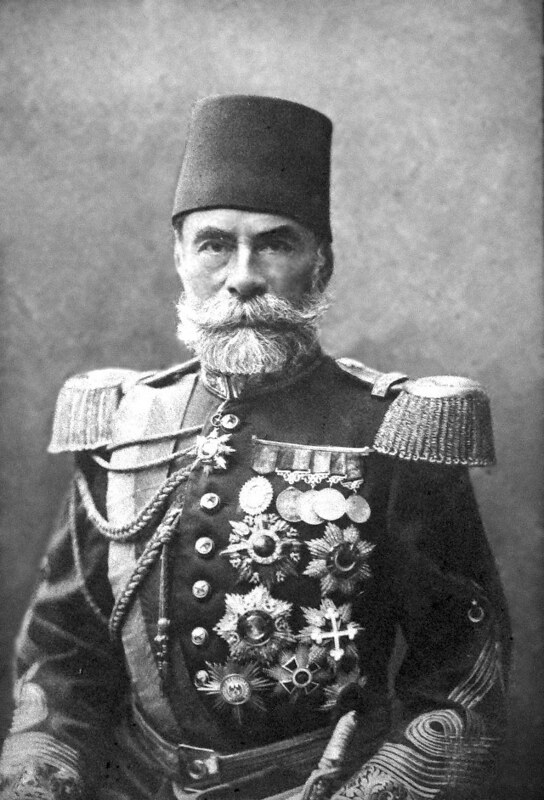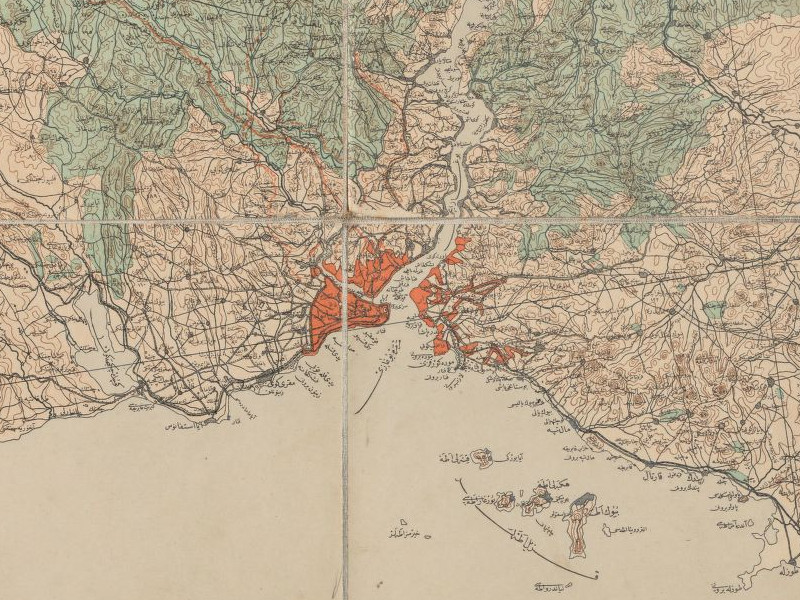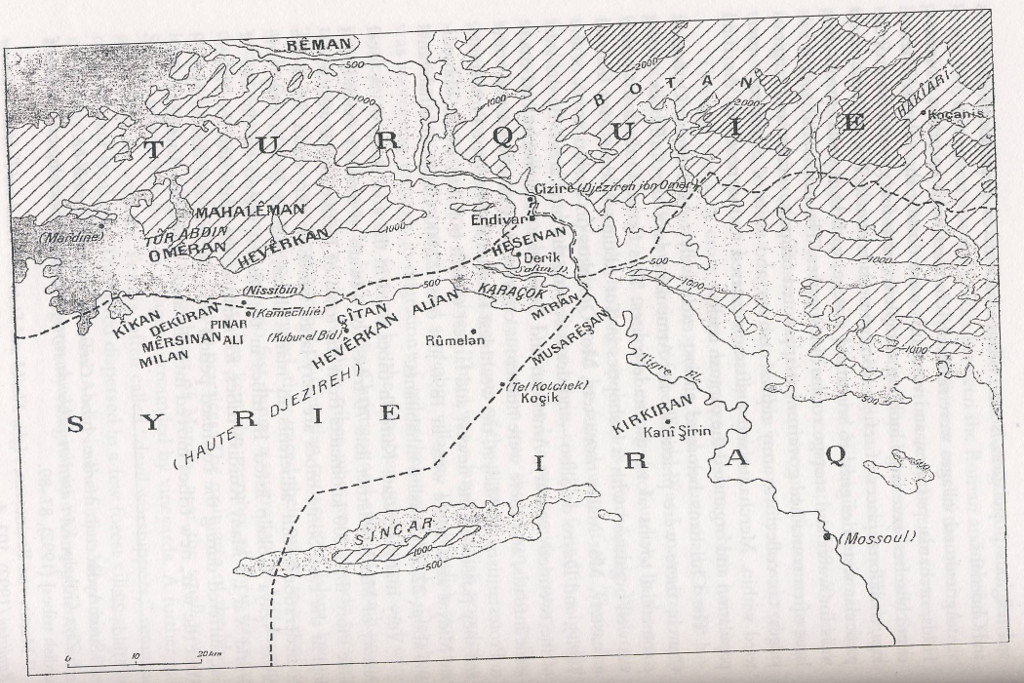Chapter 36: The Ottoman opposition
If one could have spoken of any kind of a common “vision” of the fragmented opposition during the final days of Abdülhamid II’s reign in summer 1905, it could not have been anything more than a vague wish for a restoration of constitutional monarchy where the sultan’s powers would be held in check. With no united front against the autocrat at home, the exiled opposition groups abroad had suffered from disunity and mutual mistrust ever since their formations in the previous decades. The members of opposition facts had different backgrounds, and they expressed their aims in different ways. Many had once studied in the most distinguished academies of the Empire, and these former students of Imperial Lycée, the War Academy, the Army Medical School and the Civil Service Academy were often dissatisfied to the slow pace of reforms mainly because they knew that under the old and corrupt regime they would never have a chance for a prosperous career and good life. As years went by and Abdülhamid II consolidated his power, the small opposition cliques remained mostly political discussion circles without any real agenda or plan of action. Attempts to close the ranks of the opposition groups into a unified anti-Hamidian front never bore fruit, and the latest attempt orchestrated by Prince Sabahaddin and Ahmed Riza had led to the most recent split in February 1902 when the Congress of Ottoman Liberals had met in Paris. While all participants had agreed upon the goal of the restoration of Ottoman constitution in principle, they had still departed from the meeting as two competing groups.
The differences of opinion towards the use of violence, the future role of the Ottoman army in the society and the possible reliance on Great Power intervention had divided the participants firmly into two camps. The supporters of the radical and pro-British Prince Sabahaddin had been able to reach a common ground with the Armenian representatives of the ARF. In their vision for the future the old decentralized Ottoman system of government was to be restored, so that local bodies would once again take care of the municipal and judicial affairs, and perform the tax collection based on local needs as well. The opponents of this approach were advocating the return of the constitution in a parliamentary framework while at the same time detesting the idea of foreign intervention as harmful to the unity and continued existence of the Empire. These forces were now rallying under the banner of Ahmed Riza. He was a man of the old system and conservative at heart, and supported the existing Ottoman political and social order of the Tanzimat era, merely hoping that the Sultan would ultimately democratize his administration and rid his bureaucracy from rampart corruption.
But while the Sabahaddin group had since then continued to propagate his message among the Ottoman exiles and Ahmed Riza had sought to expand his conspirational network to Rumelia and the Ottoman capital[1], the Armenian revolutionaries had chosen the most radical and confrontational approach with their assassination plan. Now the Sultan was dead, anti-Armenian violence ravaged Anatolia and major cities of the Empire, and the Western powers had finally intervened to Ottoman affairs just as the Armenian terrorists had planned - but to the dismay of ARF, their attention was now firmly fixed to Macedonia, while the Armenian reforms were clearly becoming a secondary issue compared to the Eastern Question.
With the death of Abdülhamid II, the leaders of the émigré movement, as well as those exiled within the empire, had hastily returned from their exiles to a heroes’ welcome. Yet by autumn 1905 the situation in the country was still firmly under control of the old elites and the former advisors of the Sultan. Age and seniority were important preconditions for authority in Ottoman society and the would-be revolutionaries and conspirators, being for the most part captains and majors or minor bureaucrats in their late twenties and early thirties, had neither. The secret society known as the Fatherland and Liberty[2], lacking a definable political programme for the new situation, therefore chose to leave politics in the hands of the existing cabinet and to those willing to organize new parties. In the meantime it sought to set itself up as a shadowy guardian of the new liberty with a self-imposed mission to guard the constitutional freedom, interfering in politics whenever it saw fit.
Once the news of upcoming reforms had sunk in in the Empire (this took some time because the first announcement in the capital was an unobtrusive, three-line item in the newspapers announcing new elections), public reaction in Istanbul and Asia was similar to that in Macedonia – tremendous joy and relief, with people from all walks of life and every community, Muslim, Jewish and Christian alike, filled with unrealistic expectations about the future and hope that the current turmoil and religious strife would finally end. The freedom of thought, of expression and of association declared by the government had surprising early effect: widespread labour unrest. Workers in major cities demanded wage rises to compensate for rising prices (inflation was a staggering 20 per cent in the first two months after the intervention to Macedonia), and when their demands were not met a wave of strikes swept across the empire: there were more than 100 in six months. The government, which had at first been content for the public to let off steam in political demonstrations, was alarmed by the strikes and reacted by enacting labour legislation that banned trade unions in the public sector, introduced compulsory arbitration and thus made further strike action extremely difficult. This legislation effectively suppressed the labour movement, and there were hardly any strikes during the spring 1906 and the upcoming elections.
The last elections in the Empire, the 1877–78 parliamentary elections, had been held in accordance with the provisional electoral regulations that stipulated the election of deputies by administrative councils in the provinces. A new election law that had been drafted in the same Parliament but never ratified was now taken as the basis of the 1906 elections.[3] It stipulated two-stage balloting in which every tax-paying male Ottoman citizen above the age twenty-five was entitled to vote in a primary election to select secondary voters. Secondary voters, each elected by 500 to 750 primary voters, then voted to determine the member(s) of the Chamber in the numbers specified for a particular electoral district, the sancak. The law did not make special quota arrangements for the religious or sectarian communities. Each voter was to vote as an Ottoman citizen for deputies representing not a particular community, but all Ottomans. This was the theory.
In practice, plethora of ethnic-based cultural and political clubs emerged as soon as it became clear that their existence would now be tolerated in the name of freedom of association. Among the newly formed societies were the Greek Political Club (Rum Siyasi Kulübü), the Serbian-Ottoman Club (Sırp-Osmanlı Kulübü), the Armenian Dashnak (Federation), the Bulgarian Club, the Jewish Youth Club (Musevi Gençler Kulübü), the Lovers of Anatolia (Anadolu Muhibleri), the Albanian Bashkim (Union), and the Kurdish Mutual Aid Society (Kürt Teâvün Kulübü). The minorities of the Empire were not the only political factions that became active in the first real election campaign in a generation. The exiled opposition forces begun to assemble their own political parties to promote their visions for the future of the Ottoman Empire. Prince Sabahattin organized the Ottoman Liberal Union Party (Osmanli Ahrar Firkasi), while the more conservative opposition members who did not share the decentralized and pro-minority visions of Sabahattin created the Ottoman Democratic Party (Osmanli Democrat Firkasi) under the leadership of men like Celal Nuri, Ibrahim Temo, Abdullah Cevdet and Ahmet Muhtar.
But the modernist exiles were far from alone in their plans. A dervish named Hafiz Dervis Havdeti, member of the influential Bektasi order, was also deeply concerned about the future of his homeland, and together with his supporters he established the new Society of Islamic Unity (Ittihad-i Muhammedi Cemiyeti) around the newspaper Volkan. Declaring the intention to establish a regime that would fulfill the basic duties of Islamic government, it called all pious Muslims to rally to defense of Islamic law and the basic practices of Islam, spread the light of the Divine Unity throughout the empire, and free Muslims all over the world from the tyranny of non-Muslim oppression. On April 3rd, 1906, the birthday of the Prophet, the society held its first mass meeting at the Aya Sofya mosque. Vahdeti stated to cheering crowds that Muslims had the same rights as non-Muslims to defend their ideals and rights. As both modernist parties started to organize their own rallies together with the various national clubs, the Ottoman elections of 1906 seemed poised to become much more tightly contested event that it had been initially estimated.
1: Mehmed Talaat Pasha is a postal clerk in Edirne. He's a family man, happily married to a Jewish girl he dated when he was 21, being never caught and arrested for sending an illegal telegram as per OTL. As a result he's not part of the conspiracies of TTL, and the secret organization goes along with a different name.
2: This group has most support among the younger officers of the 5th Army in Damascus - Mustafa Kemal Pasha was still planning his transfer to Macedonia when Abdülhamid II was assassinated TTL. Many activist officers who joined CUP in OTL have thus joined to the Savior Officers movement in TTL.
3. In OTL the same law formed the basis of 1908 elections.
The differences of opinion towards the use of violence, the future role of the Ottoman army in the society and the possible reliance on Great Power intervention had divided the participants firmly into two camps. The supporters of the radical and pro-British Prince Sabahaddin had been able to reach a common ground with the Armenian representatives of the ARF. In their vision for the future the old decentralized Ottoman system of government was to be restored, so that local bodies would once again take care of the municipal and judicial affairs, and perform the tax collection based on local needs as well. The opponents of this approach were advocating the return of the constitution in a parliamentary framework while at the same time detesting the idea of foreign intervention as harmful to the unity and continued existence of the Empire. These forces were now rallying under the banner of Ahmed Riza. He was a man of the old system and conservative at heart, and supported the existing Ottoman political and social order of the Tanzimat era, merely hoping that the Sultan would ultimately democratize his administration and rid his bureaucracy from rampart corruption.
But while the Sabahaddin group had since then continued to propagate his message among the Ottoman exiles and Ahmed Riza had sought to expand his conspirational network to Rumelia and the Ottoman capital[1], the Armenian revolutionaries had chosen the most radical and confrontational approach with their assassination plan. Now the Sultan was dead, anti-Armenian violence ravaged Anatolia and major cities of the Empire, and the Western powers had finally intervened to Ottoman affairs just as the Armenian terrorists had planned - but to the dismay of ARF, their attention was now firmly fixed to Macedonia, while the Armenian reforms were clearly becoming a secondary issue compared to the Eastern Question.
With the death of Abdülhamid II, the leaders of the émigré movement, as well as those exiled within the empire, had hastily returned from their exiles to a heroes’ welcome. Yet by autumn 1905 the situation in the country was still firmly under control of the old elites and the former advisors of the Sultan. Age and seniority were important preconditions for authority in Ottoman society and the would-be revolutionaries and conspirators, being for the most part captains and majors or minor bureaucrats in their late twenties and early thirties, had neither. The secret society known as the Fatherland and Liberty[2], lacking a definable political programme for the new situation, therefore chose to leave politics in the hands of the existing cabinet and to those willing to organize new parties. In the meantime it sought to set itself up as a shadowy guardian of the new liberty with a self-imposed mission to guard the constitutional freedom, interfering in politics whenever it saw fit.
Once the news of upcoming reforms had sunk in in the Empire (this took some time because the first announcement in the capital was an unobtrusive, three-line item in the newspapers announcing new elections), public reaction in Istanbul and Asia was similar to that in Macedonia – tremendous joy and relief, with people from all walks of life and every community, Muslim, Jewish and Christian alike, filled with unrealistic expectations about the future and hope that the current turmoil and religious strife would finally end. The freedom of thought, of expression and of association declared by the government had surprising early effect: widespread labour unrest. Workers in major cities demanded wage rises to compensate for rising prices (inflation was a staggering 20 per cent in the first two months after the intervention to Macedonia), and when their demands were not met a wave of strikes swept across the empire: there were more than 100 in six months. The government, which had at first been content for the public to let off steam in political demonstrations, was alarmed by the strikes and reacted by enacting labour legislation that banned trade unions in the public sector, introduced compulsory arbitration and thus made further strike action extremely difficult. This legislation effectively suppressed the labour movement, and there were hardly any strikes during the spring 1906 and the upcoming elections.
The last elections in the Empire, the 1877–78 parliamentary elections, had been held in accordance with the provisional electoral regulations that stipulated the election of deputies by administrative councils in the provinces. A new election law that had been drafted in the same Parliament but never ratified was now taken as the basis of the 1906 elections.[3] It stipulated two-stage balloting in which every tax-paying male Ottoman citizen above the age twenty-five was entitled to vote in a primary election to select secondary voters. Secondary voters, each elected by 500 to 750 primary voters, then voted to determine the member(s) of the Chamber in the numbers specified for a particular electoral district, the sancak. The law did not make special quota arrangements for the religious or sectarian communities. Each voter was to vote as an Ottoman citizen for deputies representing not a particular community, but all Ottomans. This was the theory.
In practice, plethora of ethnic-based cultural and political clubs emerged as soon as it became clear that their existence would now be tolerated in the name of freedom of association. Among the newly formed societies were the Greek Political Club (Rum Siyasi Kulübü), the Serbian-Ottoman Club (Sırp-Osmanlı Kulübü), the Armenian Dashnak (Federation), the Bulgarian Club, the Jewish Youth Club (Musevi Gençler Kulübü), the Lovers of Anatolia (Anadolu Muhibleri), the Albanian Bashkim (Union), and the Kurdish Mutual Aid Society (Kürt Teâvün Kulübü). The minorities of the Empire were not the only political factions that became active in the first real election campaign in a generation. The exiled opposition forces begun to assemble their own political parties to promote their visions for the future of the Ottoman Empire. Prince Sabahattin organized the Ottoman Liberal Union Party (Osmanli Ahrar Firkasi), while the more conservative opposition members who did not share the decentralized and pro-minority visions of Sabahattin created the Ottoman Democratic Party (Osmanli Democrat Firkasi) under the leadership of men like Celal Nuri, Ibrahim Temo, Abdullah Cevdet and Ahmet Muhtar.
But the modernist exiles were far from alone in their plans. A dervish named Hafiz Dervis Havdeti, member of the influential Bektasi order, was also deeply concerned about the future of his homeland, and together with his supporters he established the new Society of Islamic Unity (Ittihad-i Muhammedi Cemiyeti) around the newspaper Volkan. Declaring the intention to establish a regime that would fulfill the basic duties of Islamic government, it called all pious Muslims to rally to defense of Islamic law and the basic practices of Islam, spread the light of the Divine Unity throughout the empire, and free Muslims all over the world from the tyranny of non-Muslim oppression. On April 3rd, 1906, the birthday of the Prophet, the society held its first mass meeting at the Aya Sofya mosque. Vahdeti stated to cheering crowds that Muslims had the same rights as non-Muslims to defend their ideals and rights. As both modernist parties started to organize their own rallies together with the various national clubs, the Ottoman elections of 1906 seemed poised to become much more tightly contested event that it had been initially estimated.
1: Mehmed Talaat Pasha is a postal clerk in Edirne. He's a family man, happily married to a Jewish girl he dated when he was 21, being never caught and arrested for sending an illegal telegram as per OTL. As a result he's not part of the conspiracies of TTL, and the secret organization goes along with a different name.
2: This group has most support among the younger officers of the 5th Army in Damascus - Mustafa Kemal Pasha was still planning his transfer to Macedonia when Abdülhamid II was assassinated TTL. Many activist officers who joined CUP in OTL have thus joined to the Savior Officers movement in TTL.
3. In OTL the same law formed the basis of 1908 elections.
Last edited:



